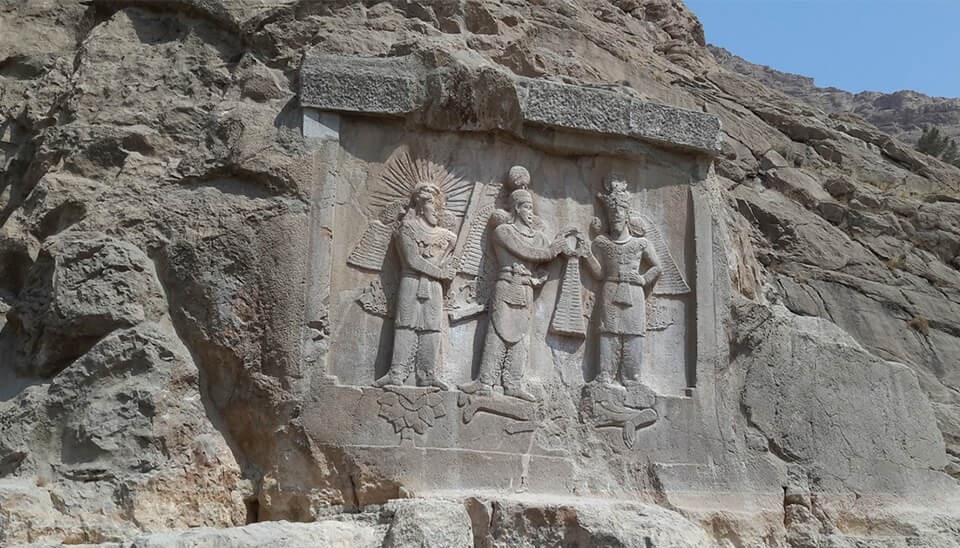
Bisotun
Are you in love with the magnificent history, great civilizations, and people who lived many years ago? Then You shouldn’t miss the chance of visiting the Bisotun Inscription with more than twenty national monuments. So let’s have travel back to the time of kings and queens, wars and victories, glory and pride.
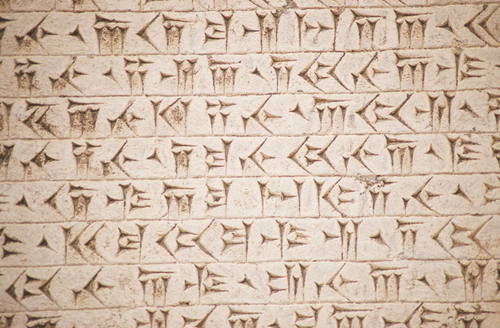
About Bisotun
Carved into the side of Kuh-e Bisotun (Mt Bisotun) is a series of bas-reliefs and cuneiform inscriptions dating from 521 BC established by Darius the Great. Bisotun inscriptions are written in three lost languages, Elamite, Akkadian and Old Persian. The inscriptions begin with a brief biography of Darius, king of the Persian Empire. It provides a long sequence of events following the deaths of Cyrus the Great and Cambyses II. He had fought nineteen battles in a period of one year. Darius the Great declared himself conquering in all battles, attributing his success to the “grace of Ahura Mazda”. The inscription was listed as a World Heritage Site by UNESCO in 2006.

Etymology of Bisotun
It is believed that the word “Bisotun” came from the two words “bagh” meaning “God” and “Estan” (the suffix for place means land) and “Baghestan” meant “the place of the gods”. The word Bisotun in Pahlavi language became “Bahistan” and then “Bahistoon”. The word is called “Bahsetun” in the early Islamic centuries and today is called Bisotun. The word “Bisotun” which means “with no pillar” in Persian, is of interactive dialects and lacks validity.
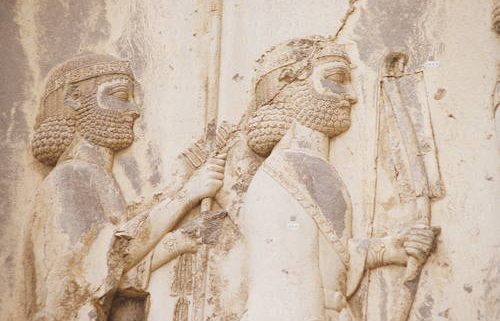
About Bisotun Inscription
The Old Persian text contains 414 lines in five columns; the Elamite text includes 593 lines in eight columns and the Babylonian text is in 112 lines. The inscription was illustrated by a life-sized bas-relief of Darius, Achaemenid king, holding a bow as a sign of kingship, with his left foot on the chest of a figure lying on his back before him. His right hand is up toward Ahura Mazda, which represents praying.
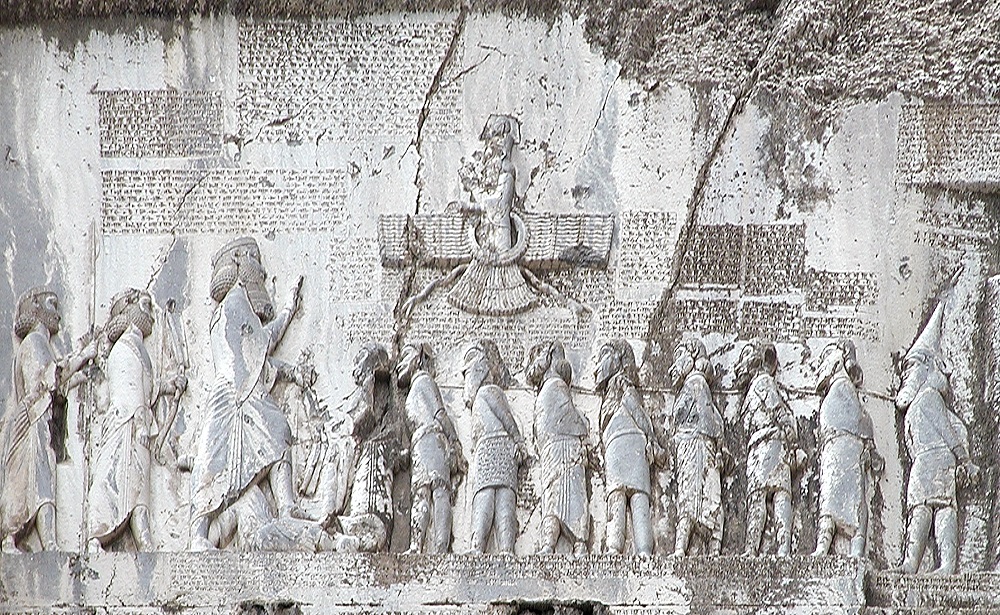
Ahura Mazda is embodied with a human face and a rectangular beard, emerging from the luminaries of sunlight shining through. On his head lay a shining crown with horns that signify his divinity. Ahura Mazda extends her left hand with a ring to Darius, celebrating the surrender of the kingdom to Darius. With his right hand raised, he wishes good luck to Darius. The face-down figure is believed to be Gaumata. Darius is attended to the left by two servants, and ten figures stand to the right, with hands tied and rope around their necks, representing conquered people. They are the rebels to the Persian throne who had been caught by Darius.
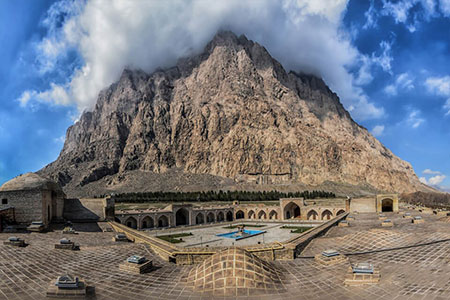
How Bisotun Was Built
The Bisotun inscription was built a few tens of meters above the ground on the southern slope of the mountain, and the remains of a staircase in the upper part of the Bisotun Mount are likely to have been used by the stone-cutter to reach the location of the inscription. At the end of the work, the stairs have been destroyed to make the work inaccessible. The Bisotun inscription was created on a rock made of limestone. It’s believed that the whole work was covered with an unknown essence due to the brown glaze that can be found on the surface.
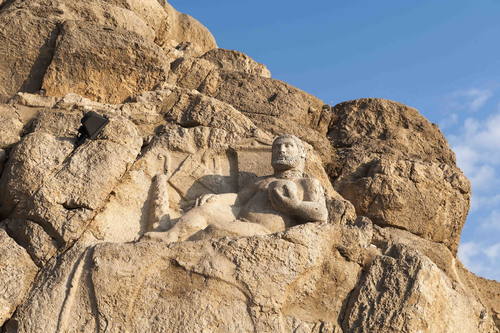
Location of Bisotun Inscription
Near the city of Kermanshah in western Iran, the inscription at Bisotun (meaning “place of gods”), which is about 15 m high by 25 m wide, opened the door to previously unknown aspects of ancient civilizations. That’s why it’s comparable to Rosetta Stone for Egyptology. It is located along with one of the main routes that used to link Persia with Mesopotamia, near the town of Bisistun in the foothills of the Zagros Mountains of Iran, and attracted the attention of many kings.
There are other amazing sights you can visit in Kermanshah; for example, Taq-e Bostan, Quri Qala Cave, Ghar Parau, and Tekyeh Biglarbeygi.

Where to Eat near Bisotun
Shab Haye Bisotun and Imam Hussein Restaurant are the restaurants you can choose if you felt like having something to eat after your tour in Bisotun complex.
Where to Stay near Bisotun
There are several options near Bisotun for you to consider. The luxury Kermanshah Parian Hotel and the beautiful Laleh Bistoon Hotel are the hotels that Apochi offers you to stay during your trip.
Bisotun Location
How To Get To Bisotun
Plane
You can take the plane from Mehrabad airport in Tehran to Shahid Ashrafi Esfahani Airport in Kermanshah. Then, drive a car for about 30 km to the east of Kermanshah to get there.
By Car
You can take the plane from Mehrabad airport in Tehran to Shahid Ashrafi Esfahani Airport in Kermanshah. Then, drive a car for about 30 km to the east of Kermanshah to get there.
Other attractions in Kermanshah
Hotels near Bisotun, Kermanshah
Book Your Hotel In Kermanshah
Book Your Domestic Flights in Iran
Any Questions?
Ask your questions about accommodations in Shiraz from our travel experts:

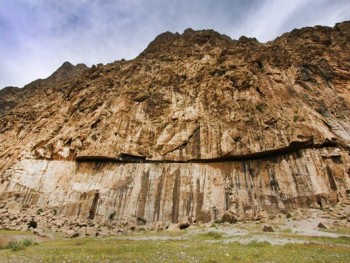


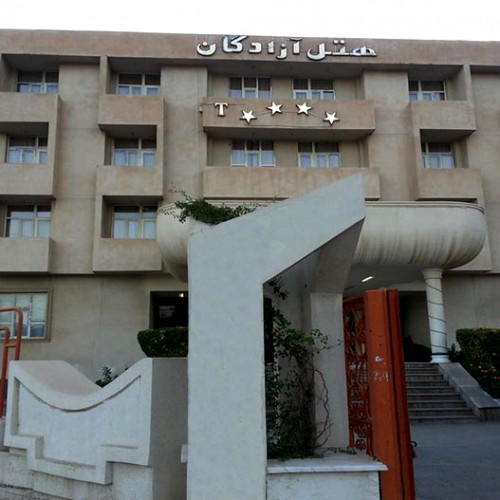


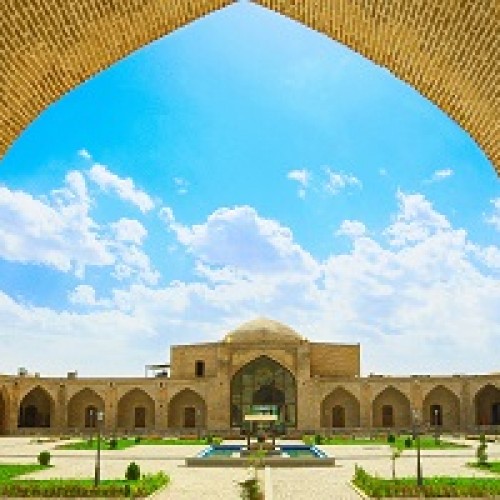



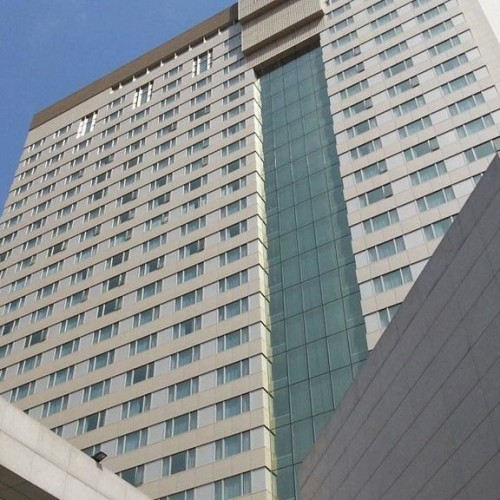

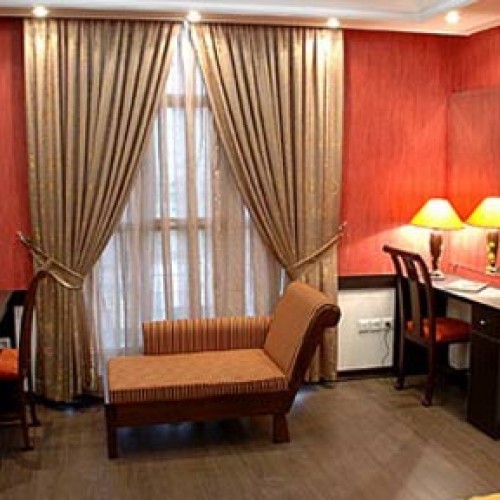


 Trusted
Partner
Trusted
Partner